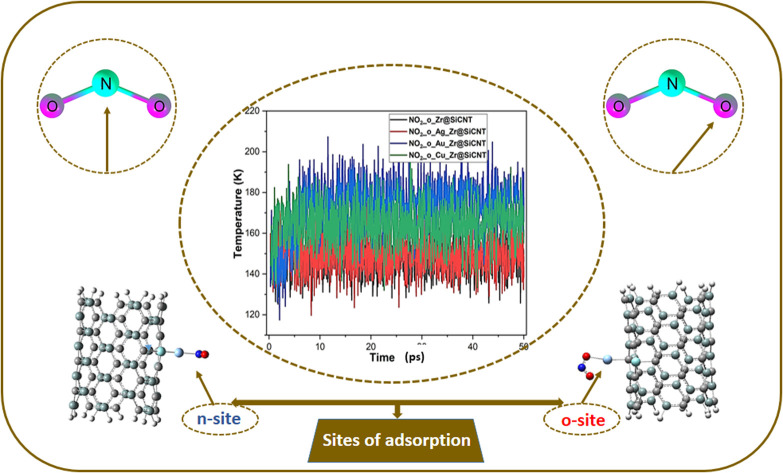- Record: found
- Abstract: found
- Article: found
Adsorption and sensor performance of transition metal-decorated zirconium-doped silicon carbide nanotubes for NO 2 gas application: a computational insight†

Read this article at
Abstract
Owing to the fact that the detection limit of already existing sensor-devices is below 100% efficiency, the use of 3D nanomaterials as detectors and sensors for various pollutants has attracted interest from researchers in this field. Therefore, the sensing potentials of bare and the impact of Cu-group transition metal (Cu, Ag, Au)-functionalized silicon carbide nanotube (SiCNT) nanostructured surfaces were examined towards the efficient detection of NO 2 gas in the atmosphere. All computational calculations were carried out using the density functional theory (DFT) electronic structure method at the B3LYP-D3(BJ)/def2svp level of theory. The mechanistic results showed that the Cu-functionalized silicon carbide nanotube surface possesses the greatest adsorption energies of −3.780 and −2.925 eV, corresponding to the adsorption at the o-site and n-site, respectively. Furthermore, the lowest energy gap of 2.095 eV for the Cu-functionalized surface indicates that adsorption at the o-site is the most stable. The stability of both adsorption sites on the Cu-functionalized surface was attributed to the small ellipticity ( ε) values obtained. Sensor mechanisms confirmed that among the surfaces, the Cu-functionalized surface exhibited the best sensing properties, including sensitivity, conductivity, and enhanced adsorption capacity. Hence, the Cu-functionalized SiCNT can be considered a promising choice as a gas sensor material.
Abstract
Owing to the fact that the detection limit of already existing sensor-devices is below 100% efficiency, the use of 3D nanomaterials as detectors and sensors for various pollutants has attracted interest from researchers in this field.

Related collections
Most cited references89
- Record: found
- Abstract: found
- Article: not found
Multiwfn: a multifunctional wavefunction analyzer.

- Record: found
- Abstract: found
- Article: found
Environmental and Health Impacts of Air Pollution: A Review
- Record: found
- Abstract: found
- Article: not found